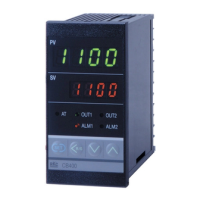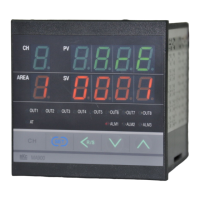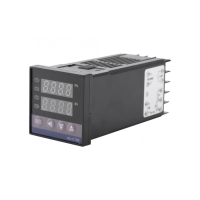IMR02L04-E3 3-1
3. WIRING
3.1 Wiring Cautions
Power supply wiring
If there is electrical noise in the vicinity of the instrument that could affect operation, use a noise filter.
Shorten the distance between the twisted power supply wire pitches to achieve the most effective
noise reduction.
Always install the noise filter on a grounded panel. Minimize the wiring distance between the noise
filter output and the instrument power supply terminals to achieve the most effective noise
reduction.
Do not connect fuses or switches to the noise filter output wiring as this will reduce the effectiveness
of the noise filter.
Power supply wiring must be twisted and have a low voltage drop.
About 5 seconds are required as preparation time for contact output every time the instrument is turned
on. Use a delay relay when the output line is used for an external interlock circuit.
This instrument is not furnished with a power supply switch or fuse. Therefore, if a fuse or power
supply switch is required, install close to the instrument.
Recommended fuse rating: Rated voltage 250 V, Rated current 1 A
Fuse type: Time-lag fuse
For an instrument with 24 V power supply, supply power from a SELV circuit.
A suitable power supply should be considered in end-use equipment. The power supply must be in
compliance with a limited-energy circuits (maximum available current of 8 A).
To prevent electric shock or instrument failure, do not turn on the power until all
wiring is completed. Make sure that the wiring is correct before applying power
to the instrument.
Instrument
power
Twist these leadwires
Minimize
distance
Shorten distance between pitches
Noise
filter
IN OUT
Instrument power
terminals

